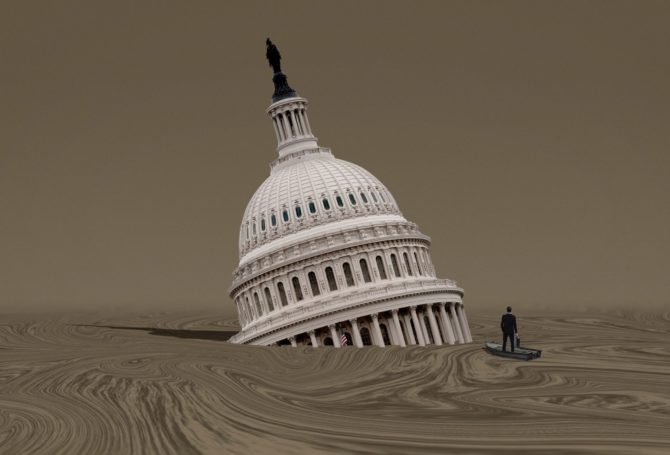
Under the political radar, the House is exploring ways to modernize congressional activity. Big ideas include better lobbyist disclosure, more staff diversity and creation of a leadership academy for Members of Congress.
The ideas are being collected on a bipartisan basis by the Select Committee on the Modernization of Congress, which was authorized in a resolution adopted in March. The resolution calls for exploration of a wide array of issues and a bank of reports from the House Clerk, Office of Diversity and Inclusion and Chief Administrative Officer. The first modernization reports were made public last week.
“This committee’s mission is to make Congress work better for the American people, which includes boosting transparency and finding ways to ‘open up’ the People’s House with just a click of a mouse,” said committee Chairman Derek Kilmer, D-Washington, and Vice Chairman Tom Graves, R-Georgia.
None of the initial ideas appear earth-shattering, but they are still noteworthy for a legislative body that seems constantly bogged down and at times dysfunctional. The House Clerk suggested ways to maintain a more up-to-date and accurate database of registered lobbyists. The Office of Diversity and Inclusion submitted a report on hiring regulations to ensure greater diversity on Capitol Hill staffs.
The March resolution included a recommendation to explore the value of Congressional Leadership Academy, which could include seminars on the legislative process, procedural rules, the appropriations process, managing a congressional office and developing improved legislative negotiation skills. The idea will be tested through a survey among congressional members.
Some suggestions were more mundane and underwhelming, such as establishing a database of votes taken, maintaining a list when various federal programs or authorizations expire and adopting standardized formats for congressional reports.
“Our mission is to make Congress work better for the American people, which includes boosting transparency and finding ways to ‘open up’ the People’s House with just a click of a mouse.”
The most recent prior effort at congressional reform occurred in 1993 with a bicameral and bipartisan committee formed the year before in the wake of a scandal involving House members writing bad checks. The committee produced recommendations, which were incorporated into the Legislative Reorganization Act of 1994. However, the bill, despite its bicameral and bipartisan origins, never received a floor in either the House or Senate. The primary obstacle were entrenched committee chairs who feared reform would diminish their power. Another pitfall was lukewarm support for reform by then House Speaker Tom Foley of Washington.
The 1993 reform committee was given a broad scope including floor procedures, the budget process, congressional staffing ,ethics, applications of workplace law to Congress and relations with other branches of government. When Republicans gained control of the House in 1995, its leadership embraced some of the recommendations in the Congressional Accountability Act, which applied some civil rights laws to Congress.
One of the learnings from the 1993 reform effort was that broad reform is nearly impossible and narrow reform is often inadequate. The conclusion was reform efforts needed to be ongoing. So, here we are in 2020 with the next significant effort at reform in the shape of modernizing congressional processes.
In the intervening period, some of the 1993 reforms, especially ones feared by powerful committee chairs, have come true. Fewer major policy bills are worked out in committee without the heavy influence of the presiding officer and legislative leaders. Committee chairs have become delivery men instead of legislative chieftains.
Congress has definitely undergone change, but it is due more to external factors such as executive branch encroachment. For example, the current Democratically controlled House has found it difficult to force compliance by the executive branch for its subpoenas for witnesses and records. The current congressional modernization effort doesn’t attempt to aim that high in seeking reform.
Ideas that have been floated for major reform address congressional budgeting, congressional oversight, selection of caucus leaders, evidence-based policymaking, a rebalance between the executive and legislative branches and a change in the culture of Congress.



